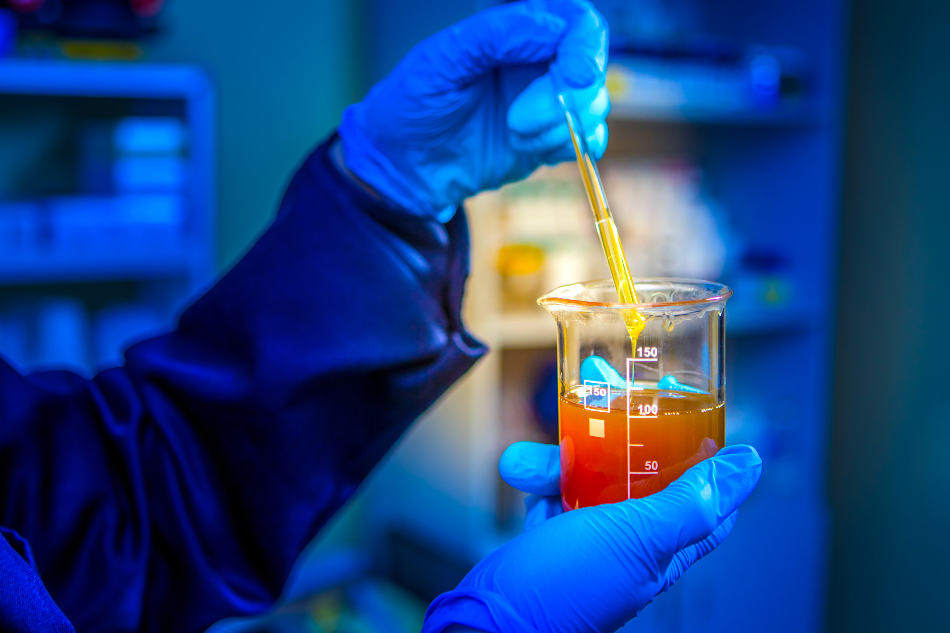Article Updated 26 May 2021

Image Credit: FOTOGRIN/Shutterstock.com
We encounter liquids of different viscosities daily; perhaps for breakfast, you had cereal and honey on toast. the honey and milk are both liquids, but they flow at different rates. One flows very easily, while the other is thicker and flows slowly – we say the honey is more viscous than the milk.
What is Viscosity?
Viscosity provides information on how thick a liquid is and how easily it flows; it is a measure of the fluid’s internal flow resistance. It is often defined as a measure of a fluid’s resistance to deforming at a given rate and is based on the concept of thickness. So, for example, syrup has a higher viscosity than water.
Viscosity is caused by friction between neighboring particles in a fluid that are moving at different speeds. It can be conceptualized as a quantifying frictional force that arises between adjacent layers of fluid that are in relative motion. Take, for example, forcing a liquid through a tube- the liquid will move faster near the central axis, and slower near the walls where there is more friction.
Viscometry
We come across many different materials in our everyday lives: some are solid and are described as being elastic; others, such as liquids, are viscous. However, we mostly encounter viscoelastic materials, those that are neither completely elastic, or viscous. In this case, we can define something as being a viscoelastic solid, e.g., jelly, or a viscoelastic liquid, e.g., yogurt drinks or shower gel.
Viscometry is part of a wider science known as rheology, which focuses on the behavior and deformation of materials. It covers ideally viscous fluids and viscoelastic liquids; fluids that flow easily have a low resistance to deformation and thus a low viscosity, while those with a high viscosity resist deformation and do not flow easily.
Factors Affecting Viscosity
The viscosity of a system is determined by how the molecules of the system interact. The kinetics of a liquid plays a part in its viscosity. Kinetics is concerned with understanding rates of reaction and how they are affected. Parameters might include concentration, pressure, or temperature.
The flow behavior can be influenced by a substance’s molecular structure - the viscosity of a fluid is dependent on the size and shape of the particles that make it up, and the attractions between them. Highly viscous substances are likely to have more tightly linked molecules that do not move much and resist deformation.
Ambient conditions, i.e., temperature and pressure, also play a role; they determine the conditions under which a liquid flows and the type of flow it develops. To measure viscosity, a laminar flow is required. That is, the molecules must move in orderly layers as opposed to turbulent flow with no layers. Turbulent flow can cause eddies and vortices, which lead to erroneous results and viscosities appearing higher than they actually are.
Temperature strongly affects fluid viscosity. Generally, viscosity in liquids decreases with an increase in temperature and increases in gases with an increase in temperature. Any temperature change can influence the viscosity of a liquid, with the size of the influence varying for different fluids.
Pressure, in this instance, plays much less of a role; an increase in pressure can increase viscosity, but only noticeably if the fluid is under incredibly high pressures.
Finally, the shear rate or stress of an external force can affect the viscosity of a fluid, be it wiping, pushing or pulling on a substance, or simply gravity. The term ‘shear rate’ refers to the degree at which a fluid is sheared, or “worked,” during flow, and also depends on the strength and duration of this external force.
Types of Viscosity
In fluid dynamics, the most commonly employed term is kinematic viscosity (or momentum diffusivity), which is defined as the ratio of viscosity (µ) to the density of the fluid (ρ) and denoted by the Greek letter nu (ν): ν = µ/ ρ. Measured in length squared over time, it reflects the influence of gravity on a substances’ flow.
Other types of viscosity include dynamic or shear viscosity, which is used in life science and research. Dynamic viscosity is the resistance to the movement of one layer of fluid over another. Relative viscosity is the ratio of the viscosity of a solution to the viscosity of the solvent used and is vital when measuring dissolved polymers. The apparent viscosity is the shear stress applied to a fluid divided by the shear rate, i.e., and it is the shear rate a viscosity value was determined.
References and Further Reading
Disclaimer: The views expressed here are those of the author expressed in their private capacity and do not necessarily represent the views of AZoM.com Limited T/A AZoNetwork the owner and operator of this website. This disclaimer forms part of the Terms and conditions of use of this website.